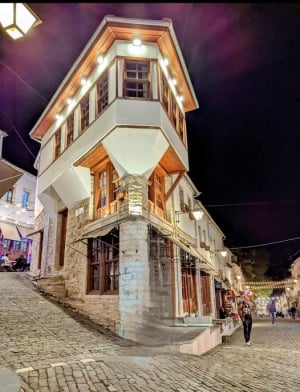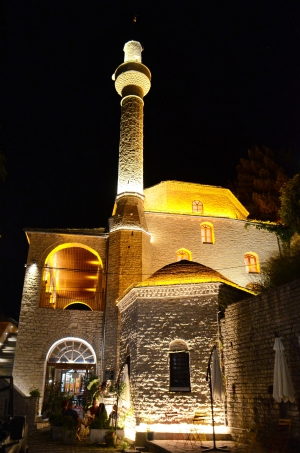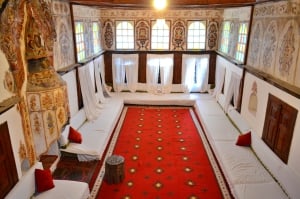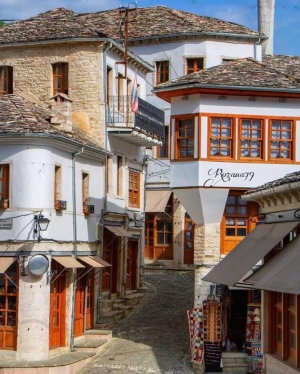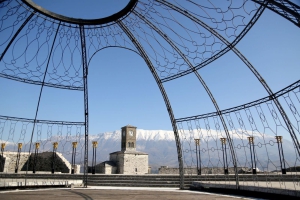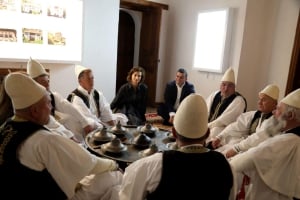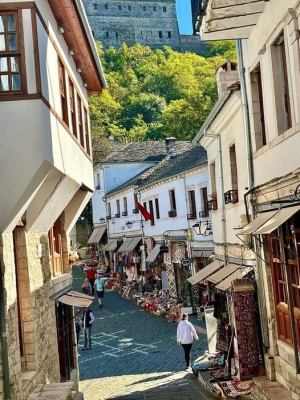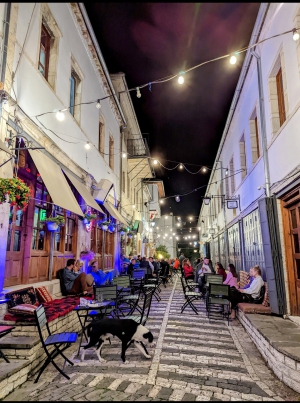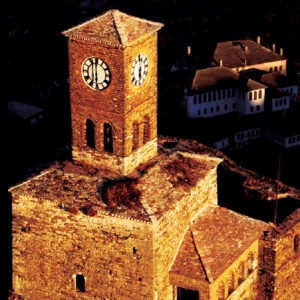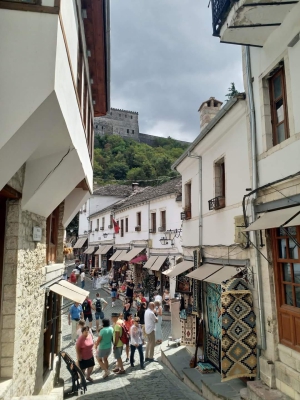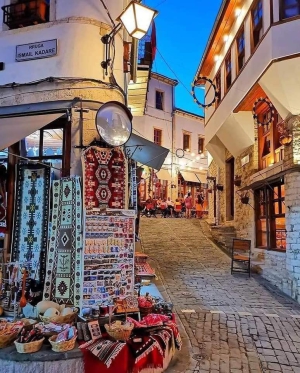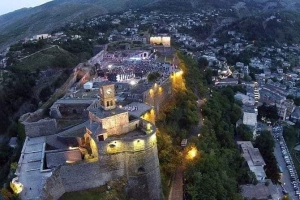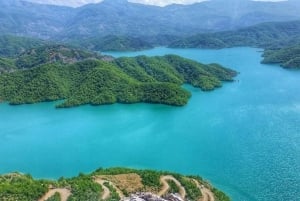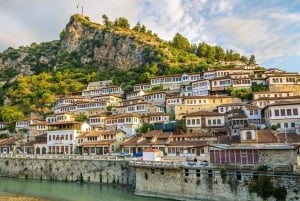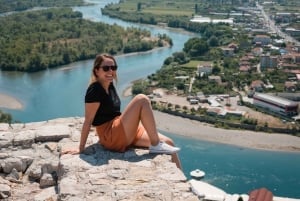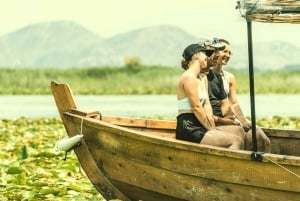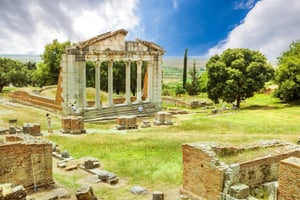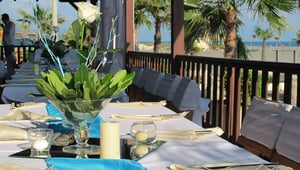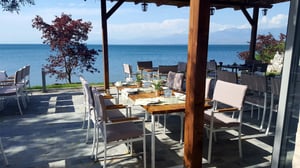Gjirokastra
The first thing to visit in Gjirokaster is the Castle.
The castle is open throughout the year (April-September, 09.00-17.00). A bar serves inside the walls of the castle. The castle is undoubtedly one of the city's grandest structures, standing on a ridge with the city sprawling around it. Spectacular views of the Drino river valley and the surrounding mountains unfold from the castle walls. Over the centuries, the castle has undergone changes and expansions: major fortifications were made under the Despotate of Epirus in the 12th-13th centuries. After the Ottoman conquest at the end of the 14th century, extensive improvements were made by Sultan Bayezit II around 1490. From 1811 Ali Pasha Tepelena added many elements, including the Clock Tower on the eastern side. He completed the fortifications of the hillside area and built the aqueduct that brought water to the fort from nearly 12 km away. In the 30s of the 20th century, the Italians built a prison in the castle at the request of King Zog, which was closed in 1960.
While walking inside the castle, you will get to know:
- Riot of the Bektashi
After passing the castle entrance and take the first right turn, straight ahead about 50 meters, you will see on the left a small building huddled behind walls in the middle of a small garden. This is an old Bektashi tomb, where two Bektashi fathers are buried.
-Gallery of Cannons
On the left of the entrance, you will see a long gallery with lined up artillery pieces. These are weapons abandoned or captured by fascist and Nazi occupation forces during World War II. At the end of the gallery there is an Italian tank, produced by Fiat in the period 1941-1943.
-National Museum of Arms
Originally opened in 1971, the National Arms Museum is located where part of the prison used to be. The museum exhibits trophy weapons from 1912 until the end of World War II. The largest part of the museum is devoted to the partisan war against the fascist and Nazi invaders from 1939 to 1944. At the Tourist Information Office you can find a brochure that explains the contents of the museum in more detail.
-The Prison
The entrance to the former prison is as soon as you enter the Weapons Museum, behind a metal door. Opened in 1932, the prison was first used by the regime of King Zog, then by the fascist and Nazi invaders and finally by the communist regime until 1968. Only the part that was turned into a museum by the communist regime in the 70s can be visited. You can also go out to the prison terrace if you take right, at the main entrance.
- The American airplane
Near the walls overlooking the city are the remains of a United States Air Force aircraft, a Lockheed T-33 two-seat trainer. The plane was forced to land at Rinas airport, near Tirana, in December 1957.
After leaving the castle, objects to be visited are:
Ethnographic Museum of Gjirokastra, which is located in the Palorto district. This is the most well-kept district in the historical city and exactly where Enver Hoxha's birthplace was. He was the communist dictator of Albania from 1944 to 1985. The museum building was erected in 1966, after the original house was destroyed from the fire. It was built as a traditional model of Girokastrit houses with many classical, traditional and cultural components that were copied by various houses in the city. From 1966 to 1991 the building served as an anti-fascist museum. In 1991, the exhibits of the ethnographic museum were brought there. The building has 4 floors, all of which are open to the public.
The rooms are arranged as if they were in use and are decorated with household items, folk costumes, artistic and cultural objects typical of the wealthy families of Gjirokastra merchants or Ottoman administrators of the 19th century.
- House of Zakates - the best specimen of the Ottoman-type tower that has survived in Gjirokastër
The tall houses or the “Kulle type” (the word kulle is of Turkish origin means tower) belonged to wealthy owners, such as administrative officials or merchants. They all have a basic composition: a lower floor necessarily built of stone for safety reasons, and the main rooms for the family are located on the upper floors. Through the walls there are turrets to enable protection from enemies. The House of Zakat is a wonderful example of a typical tower, built in 1911-1912, with two twin towers and a large double arch. From here, the views from above of the city and the Drino River are spectacular.
updated


